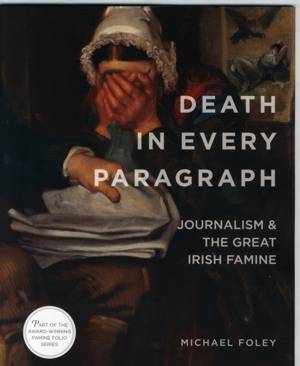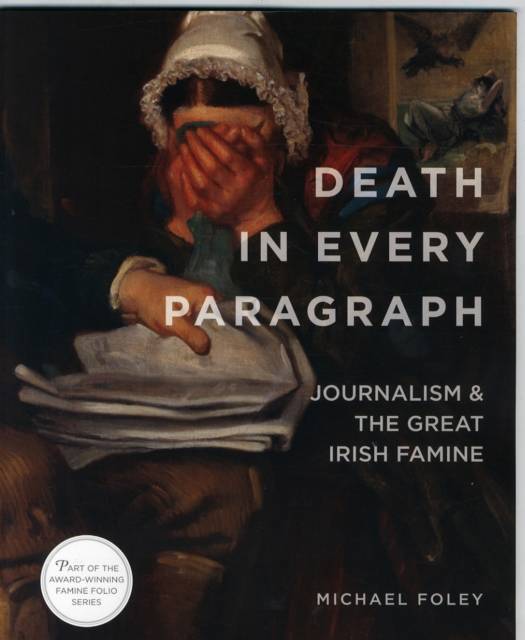
- Retrait gratuit dans votre magasin Club
- 7.000.000 titres dans notre catalogue
- Payer en toute sécurité
- Toujours un magasin près de chez vous
- Retrait gratuit dans votre magasin Club
- 7.000.000 titres dans notre catalogue
- Payer en toute sécurité
- Toujours un magasin près de chez vous
13,45 €
+ 26 points
Description
Ireland's Great Hunger Museum at Quinnipiac University publishes the Famine Folios, a unique resource for students, scholars and researchers, as well as general readers, covering many aspects of the Famine in Ireland from 1845-1852--the worst demographic catastrophe of nineteenth-century Europe. The essays are interdisciplinary in nature, and make available new research in Famine studies by internationally established scholars in history, art history, cultural theory, philosophy, media history, political economy, literature and music.
Had the Great Famine not occurred, newspapers would still have gone through massive changes in the nineteenth century that were precipitated by industrialization and urbanization. But the Famine did take place, and the ways Irish journalists found to tell the story of unprecedented horror conditioned the evolution of journalism, not just in Ireland, but abroad. The scale and complexity of the catastrophe forced journalists to find new ways of reporting news and to develop new techniques of interrogation, including the narration of the stories of ordinary people, rather than just reporting the speeches of important men. Whatever the political perspective of the journalist, the ideologies of his readers had to be taken into account, requiring him to develop new writing skills--forensic, contextual and emotional--that explained the Famine to the rest of the world. The stories that appeared in local Irish newspapers were often reprinted not only in the newspapers of Dublin, but London and other major cities, as far as America and Australia. It was the work of journalists that attracted other journalists from around the world who wanted to see for themselves how such a calamity could take place so close to the center of the world's greatest empire. The Great Irish Famine was the worst humanitarian disaster of the nineteenth century and how it was reported by the press established many of the norms of disaster coverage to this day.
Had the Great Famine not occurred, newspapers would still have gone through massive changes in the nineteenth century that were precipitated by industrialization and urbanization. But the Famine did take place, and the ways Irish journalists found to tell the story of unprecedented horror conditioned the evolution of journalism, not just in Ireland, but abroad. The scale and complexity of the catastrophe forced journalists to find new ways of reporting news and to develop new techniques of interrogation, including the narration of the stories of ordinary people, rather than just reporting the speeches of important men. Whatever the political perspective of the journalist, the ideologies of his readers had to be taken into account, requiring him to develop new writing skills--forensic, contextual and emotional--that explained the Famine to the rest of the world. The stories that appeared in local Irish newspapers were often reprinted not only in the newspapers of Dublin, but London and other major cities, as far as America and Australia. It was the work of journalists that attracted other journalists from around the world who wanted to see for themselves how such a calamity could take place so close to the center of the world's greatest empire. The Great Irish Famine was the worst humanitarian disaster of the nineteenth century and how it was reported by the press established many of the norms of disaster coverage to this day.
Spécifications
Parties prenantes
- Auteur(s) :
- Editeur:
Contenu
- Nombre de pages :
- 40
- Langue:
- Anglais
Caractéristiques
- EAN:
- 9780990468653
- Date de parution :
- 30-11-15
- Format:
- Livre broché
- Format numérique:
- Trade paperback (VS)
- Dimensions :
- 224 mm x 279 mm
- Poids :
- 226 g







